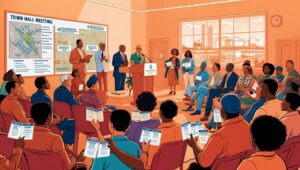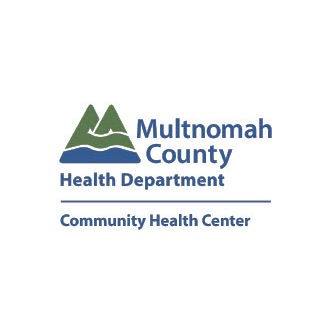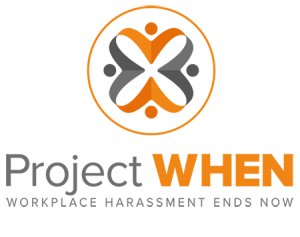From Crisis to Clarity: How Multnomah County Uses Communication to Tackle Lead and Air Toxics
 In Portland, Oregon, historic industrial zoning, aging infrastructure, and regulatory gaps created a landscape where low-income and minority communities bore disproportionate exposure to environmental hazards. The turning point came in 2016 when revelations about unreported air toxics near schools ignited public outrage and a demand for change. In response, Multnomah County and its partners launched a sustained public education and outreach effort—one rooted in transparency, cultural responsiveness, and strategic communication.
In Portland, Oregon, historic industrial zoning, aging infrastructure, and regulatory gaps created a landscape where low-income and minority communities bore disproportionate exposure to environmental hazards. The turning point came in 2016 when revelations about unreported air toxics near schools ignited public outrage and a demand for change. In response, Multnomah County and its partners launched a sustained public education and outreach effort—one rooted in transparency, cultural responsiveness, and strategic communication.
This case study explores how Multnomah County’s campaign on lead and air toxics evolved into a model of community-centered communication. By combining animated explainers, multilingual outreach, healthcare partnerships, and real-time response systems, the campaign empowers residents, rebuilds trust, and reinforces environmental justice as a shared responsibility.
The Initiative: Multnomah County’s Lead and Air Toxics Public Education Campaign
Spanning over two decades and gaining national attention, the campaign is led by the Multnomah County Health Department, in collaboration with the Oregon Department of Environmental Quality (DEQ), Oregon Health Authority (OHA), and Portland Water Bureau. Together, these agencies have shifted from siloed regulatory actions to a united front that emphasizes accessible information, proactive prevention, and community co-ownership of environmental safety. The campaign began in the early 2000s and intensified in 2016, with notable developments continuing through 2023.
A Communication-Centered Approach
Multnomah County’s strategy is built on the belief that technical data alone won’t change behavior—but that communication can. Their campaign doesn’t just inform—it equips. It doesn’t just warn—it engages. And it doesn’t just respond to crises—it prevents them
- Visual Learning Through Animated Explainers
One of the early successes of the campaign was the development of short, engaging animated videos designed to educate families about lead exposure. These explainers illustrate:
- How lead enters homes through soil, pipes, and dust
- The impact of lead exposure on child development
- Simple steps families can take to reduce risk
The videos are available in multiple languages and are widely distributed through pediatric clinics, school district websites, community health fairs, and social media channels.
Why It Works:
Animated explainers eliminate the barrier of technical jargon. By visualizing exposure pathways and protection tips, they transform abstract risk into personal understanding. This format especially benefits communities with lower health literacy or limited English proficiency, making complex science digestible and actionable.
The videos also humanize the message. Instead of distant warnings, they portray relatable family scenarios, reinforcing the idea that prevention starts in everyday actions. This blend of clarity and empathy builds trust and encourages behavior change far more effectively than fact sheets alone.
- Community Town Halls With Language Access

Following the 2016 revelations, the county organized a series of public town halls in affected neighborhoods. Each event featured:
- Maps showing industrial sites, traffic corridors, and air toxics hotspots
- Live interpreters for Spanish, Vietnamese, and Russian speakers
- Testimony from public health experts and community members
These gatherings weren’t one-off events—they were the start of an ongoing dialogue between residents and agencies.
Why It Works:
The town halls did more than disseminate information—they validated anger, acknowledged systemic harm, and invited residents into the decision-making process. Multilingual access ensured that no voice was left out, and visual data made the stakes clear.
By prioritizing transparency and accessibility, the county built credibility with communities that historically distrusted environmental regulators. This openness turned frustration into engagement and paved the way for more collaborative solutions.
- Health Partnerships: Schools and Clinics as Messengers
Recognizing that trusted messengers are key to public health success, the campaign partnered with pediatricians, school nurses, and early childhood educators to distribute:
- Lead testing kits
- Multilingual flyers on air quality and exposure
- Guidance for families on reducing indoor pollutants
Through routine wellness checks and school mailers, the message reached families where they already were.
Why It Works:
Schools and clinics are pillars of trust in any community. By embedding lead prevention efforts into these systems, the county ensured consistent, credible exposure to the campaign’s core messages. It also made follow-up easier—families could ask questions directly to providers and receive immediate guidance or referrals.
This strategy particularly benefits low-income and immigrant communities that may lack access to centralized county resources. It removes the burden of seeking help and instead brings help to them.
- Leadline: A Real-Time Communication and Referral Hub
Launched as part of the broader effort, the Leadline is a dedicated call center for public questions about lead, drinking water safety, and testing options. Staffed by trained health educators, it offers:
- Referrals for blood lead testing
- Information about contaminated products and recalls
- Access to educational materials tailored to specific neighborhoods
Why It Works:
Leadline functions as both a hotline and a listening tool. Residents can ask urgent questions in real time, and the county can detect emerging concerns or misinformation trends. The service’s bilingual support and human-centered design foster trust, especially among those wary of automated systems or government bureaucracy.
It also creates a feedback loop: concerns raised via Leadline inform future outreach, making the campaign responsive and adaptive rather than static.
 Outreach Campaigns Linked to the Effort
Outreach Campaigns Linked to the Effort
- Asthma and Air Quality Education
In partnership with the Department of Public Health, the county launched targeted campaigns in zip codes flagged for high asthma and traffic pollution levels:
- Flyers at Schools and Clinics: Designed for families, available in multiple languages
- Clean Air Champions: A program empowering elementary students to talk about air quality at home
- Radio Segments: Featuring local parents discussing respiratory health in relatable ways
- Lead Awareness and Testing Response
In 2023, the campaign played a key role in responding to toxic lead levels found in a Vietnamese eczema cream:
- Product Recall Communication: Coordinated alerts across healthcare providers, media, and community groups
- Home Mailers: Included map screenshots and testing instructions
- Pop-Up Events: Offered free testing kits and on-site education in affected neighborhoods
These examples illustrate how communication was not just about outreach—it was also about rapid, culturally competent response.
Impact and Results
- Significant Increase in Blood Lead Testing Rates among children across the county
- Improved Enforcement Response to industrial air toxics, leading to updated permitting and facility inspections
- National Attention and Recall Action based on local health data, affecting both U.S. and international markets
- Expanded Use of Data in Grant Applications, enabling local nonprofits and the county to secure funding for environmental justice work
Takeaways: Communication Lessons from Multnomah County
Simple Visuals Bridge Complex Topics Animation and infographics break down scientific concepts, empowering families to take action.
Trusted Messengers Matter Clinics, schools, and town halls create a web of credible sources that deepen campaign impact.
Cultural Relevance Increases Reach Multilingual content and community-specific storytelling ensure that no population is left behind.
Conclusion: Reclaiming Environmental Health Through Communication
Multnomah County’s lead and air toxics campaign stands as a powerful example of how strategic communication can shift the narrative from blame to action. By combining clear messaging, trusted partnerships, and real-time support, the county didn’t just respond to an environmental crisis—it reshaped how government communicates with its people.
In an era of rising environmental risks and public skepticism, this campaign offers a blueprint: don’t just test for toxics—teach about them. Don’t just regulate—listen. And above all, make communication the foundation of environmental justice.
Ready to Elevate Your Agency’s Public Communication?
We understand the unique challenges state and local government agencies face—from complex issues to diverse community needs. Our comprehensive approach can help you transform the way you connect with constituents, improve transparency, and highlight the valuable work your agency does every day.
Interested in learning more? Reach out to us today for a consultation. We’d love to discuss how our services can support your goals and help you build lasting trust with the communities you serve.





